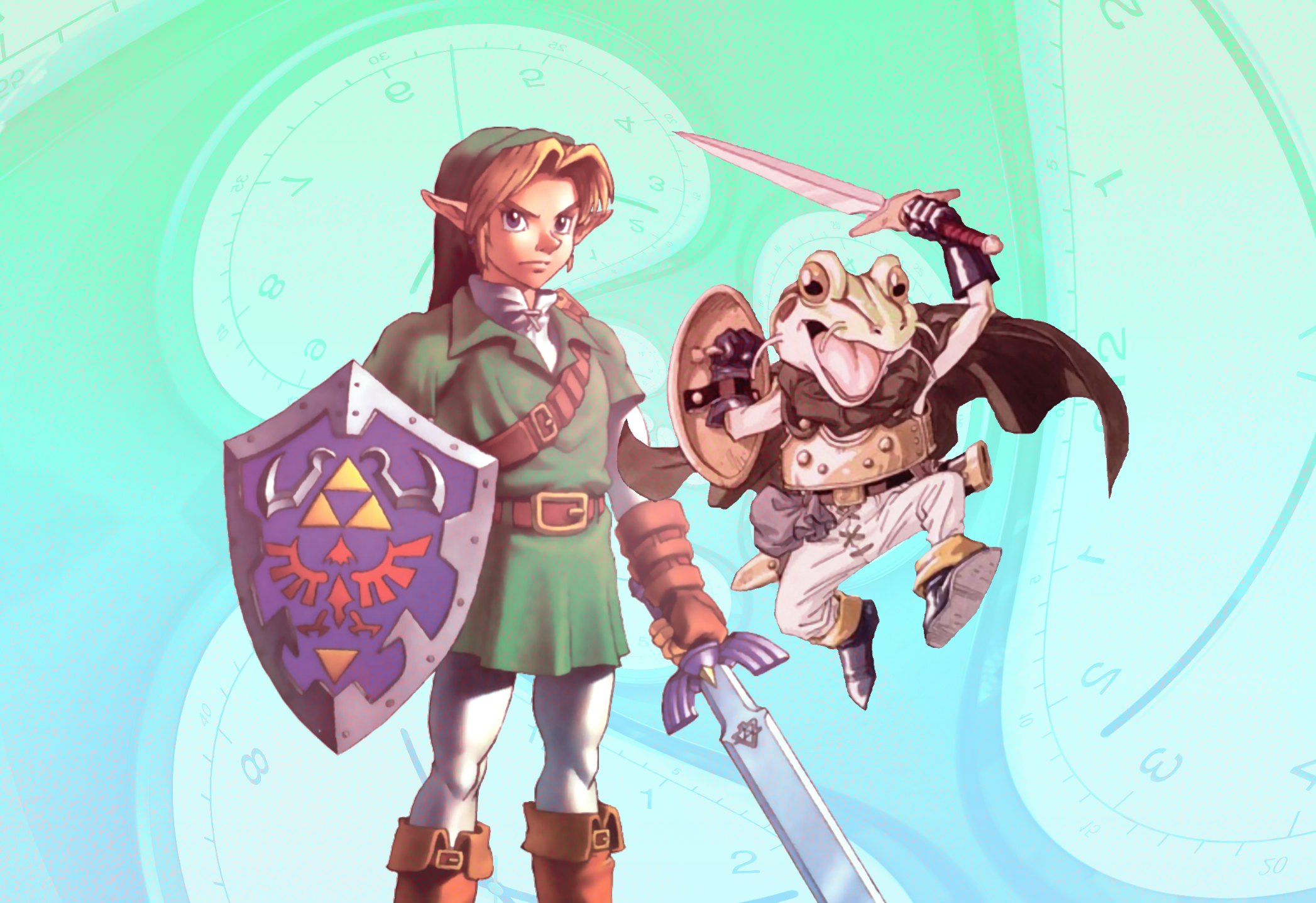
The multiverse is all the rage right now, at least if Marvel has anything to say about it. It’s a way for storytellers to explore alternate outcomes and identities, all without the bothersome causality of time travel.
But the potentially enormous impact of seemingly small details — or missteps — on the timeline is precisely what makes the very best time-travel stories so rewarding. That’s especially true in video games, where it’s vital to commit to the bit in order to be successful. The superlative games of this sci-fi subgenre are those in which you’re constantly contending with the consequences of your actions. It’s the ultimate interactive fantasy — you can save lives, right old wrongs, and maybe even prevent what seems to be an inevitable calamity.
These five titles have had an outsize influence on the medium’s depiction of chronological hijinks through both their stories and gameplay mechanics. If you’re looking for a crash course in video game time travel, look no further.
THE RULES OF TIME TRAVEL is an Inverse special issue exploring the evolution of science fiction's most imaginative sub-genre. From Marty McFly to Avengers: Endgame.
5. Life Is Strange

In most video games, movies, and TV shows, time travel is a complex blessing to be wielded with care — but it’s almost always a tool of awesome power. However, in Life Is Strange, Max’s ability to rewind time quickly becomes a curse. After the aspiring photographer saves her estranged former bestie Chloe from certain death, the repercussions of those actions ripple and reverberate in wildly unpredictable ways.
Throughout all five episodes of Square Enix and Dontnod Entertainment’s choice-driven narrative adventure, Max comes to realize that her cool little party trick is not only breaking her mind — it’s also the instigating factor behind an otherworldly storm that’s going to destroy her hometown and everyone in it.
Life Is Strange may have inspired a few too many “sad in the Pacific Northwest” copycat games, but the way in which it uses this familiar trope to immerse players in the bond between Chloe and Max is truly unforgettable.
4. 13 Sentinels: Aegis Rim
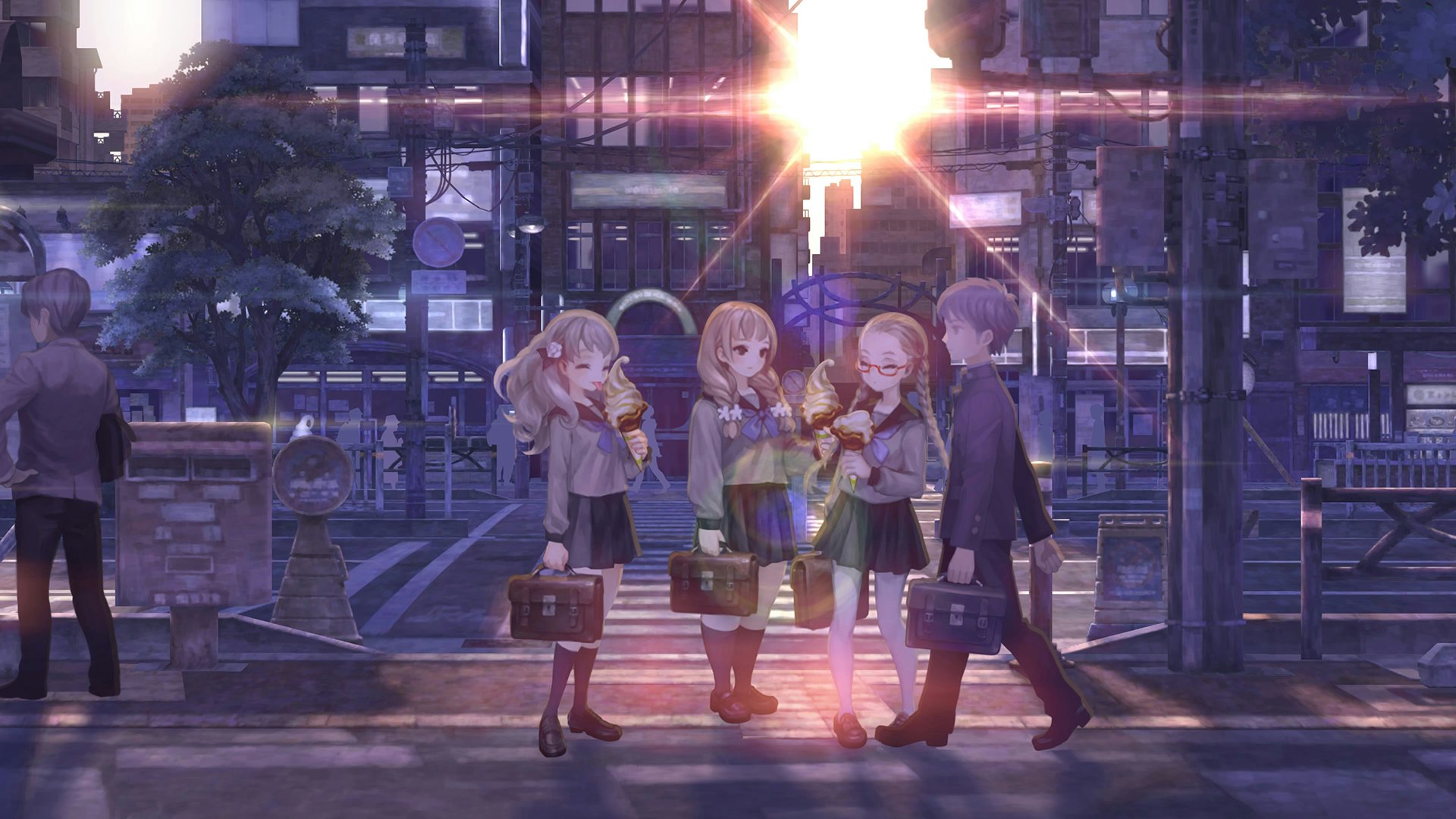
This watercolored visual novel punctuated with real-time strategy interludes is an exercise in sci-fi maximalism. It tosses every trope and plot twist you could possibly imagine at the wall — Angsty teens piloting mechs! World War II! Magical girls! Off-brand Terminator cyborgs! Convenient amnesia! Yet, miraculously, it all somehow works.
With 13 protagonists and all sorts of timey-wimey hijinks, there’s no way you’re going to be able to keep the story straight without some serious flow charting. But it doesn’t matter. For the most part, 13 Sentinels doesn’t tell a story in a linear fashion but instead invites you to explore its sprawling web of cause and effect however you choose. The result is trippy, kaleidoscopic, and exhilarating.
Originally released on PS4 back in 2020, 13 Sentinels is now available on Nintendo Switch, and the chill, dialogue-heavy gameplay loop makes it an ideal handheld experience. This is the perfect game to stay up far too late with — and inspire some kooky dreams once you’ve put it aside for the night.
3. 428 Shibuya Scramble
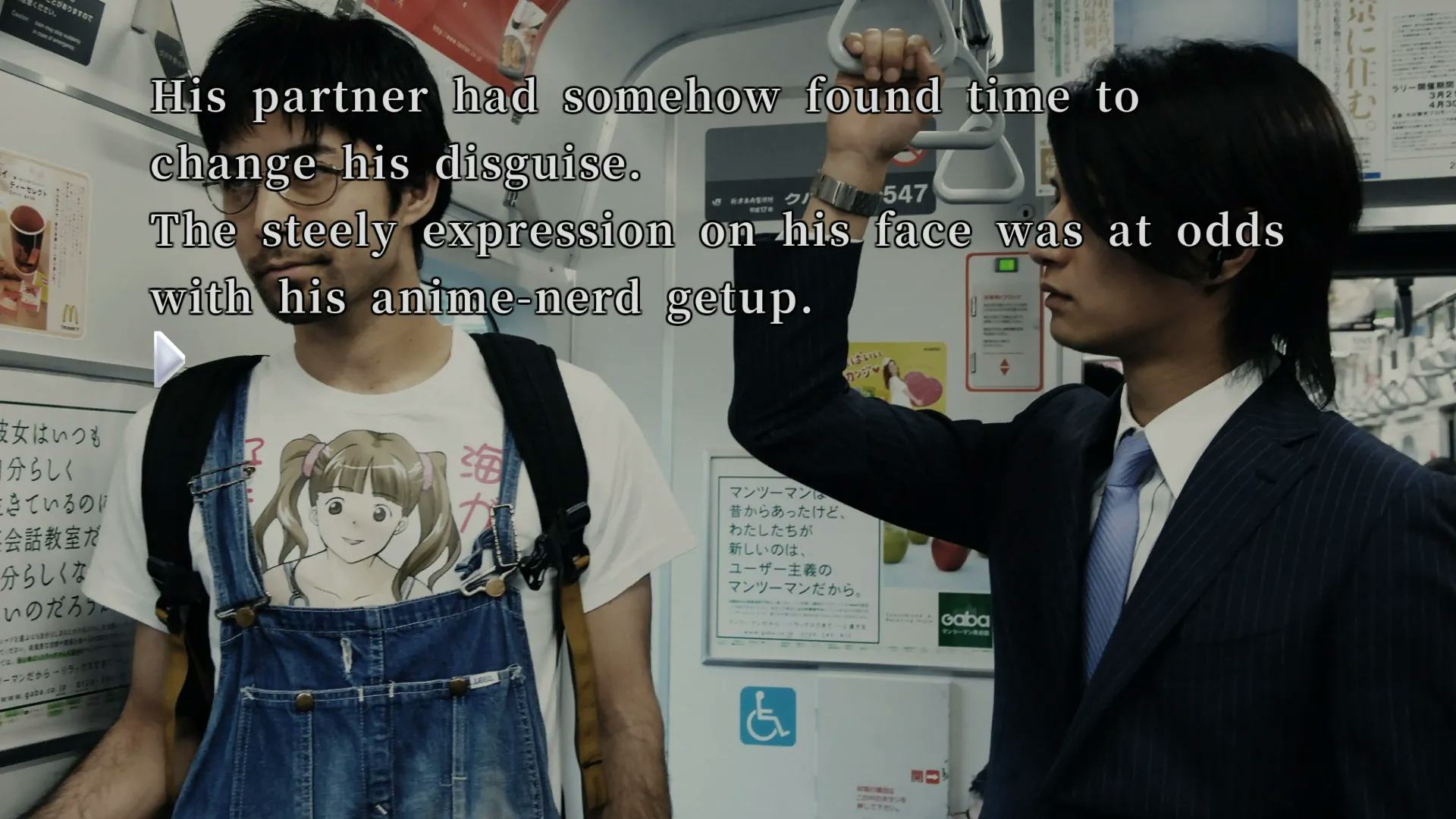
Spike Chunsoft’s underappreciated gem first debuted on the Nintendo Wii all the way back in 2008. This hilarious, genre-blending visual novel sees five protagonists — a scientist, a journalist, a gang member, a detective, and an amnesiac — simultaneously caught up in a looming terrorist event in Tokyo’s Shibuya neighborhood.
428’s story is told with a blend of live-action videos and still photos. The crew took more than 120,000 images for the game, all while outrunning or outwitting the local police, since they did not have permission to film.
While most games centered on time travel focus on big leaps between dramatically different eras, 428 focuses solely on the events of a single day, broken up into 10 hour-long chunks. Often, your aim is to get the characters’ paths to cross at the right time — but with 87 possible endings, there are a whole lot of ways that things can go hilariously wrong. You’ll spend a lot of time backtracking — 10 minutes here, an hour there — but the scenarios unfold so differently depending on your choices that the core gameplay never gets too repetitive.
428 was far enough ahead of its time that it still feels fresh even today, yet its influences can be seen in the off-kilter humor and rich sense of place found in the Yakuza games, as well as the character-swapping mechanics of 13 Sentinels.
2. The Legend of Zelda: Ocarina of Time
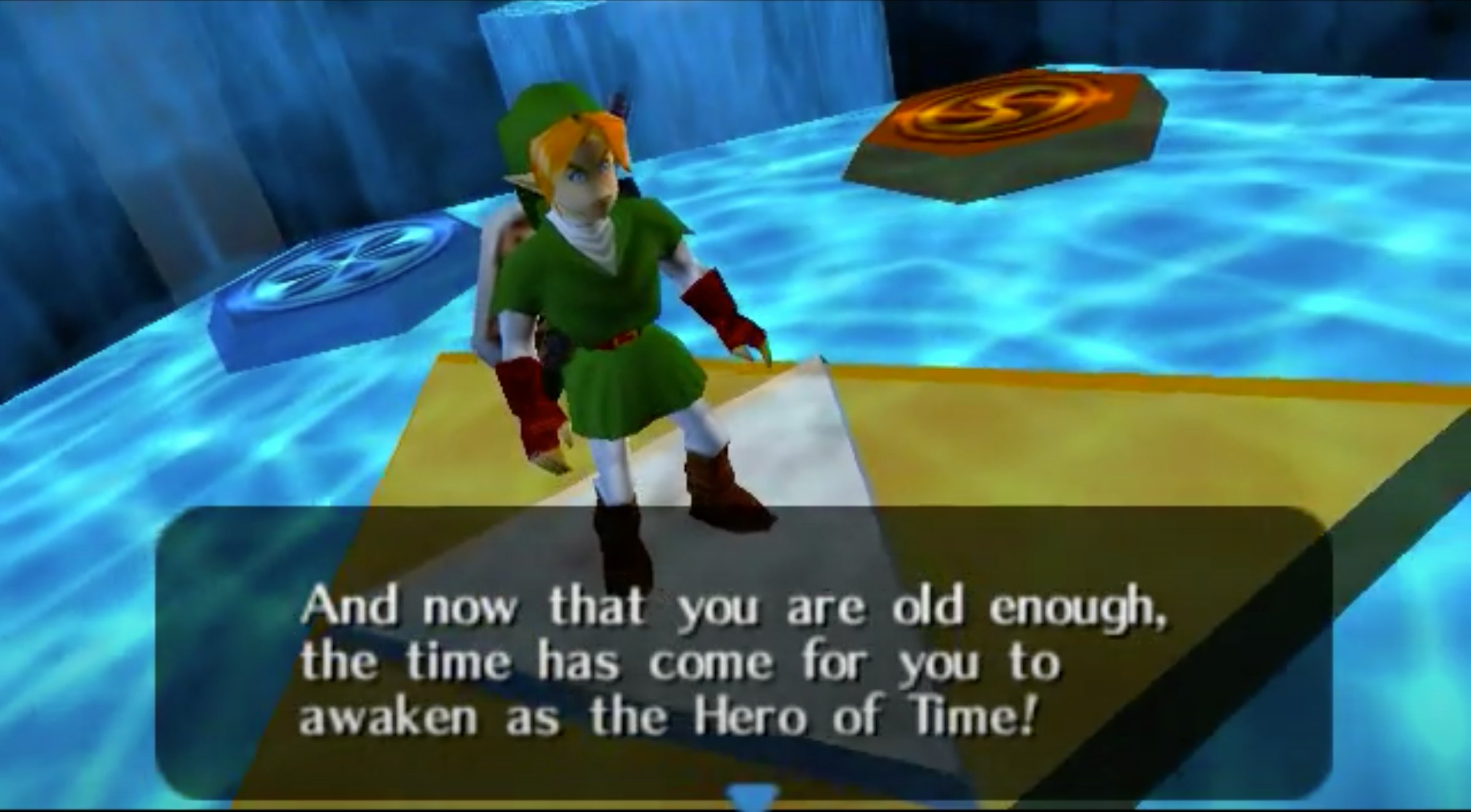
The first 3D entry in Nintendo’s venerable action-RPG series, 1998’s Ocarina of Time is the Paddington 2 of video games, with an eye-popping average critic’s score of 99 on review aggregator Metacritic.
It all plays out fairly Sword in the Stone-ish, as Zelda games tend to do. After exploring a few dungeons and beating some baddies, young Link pulls the Master Sword from its resting place in the Temple of Time in the hopes of defeating the nefarious Ganondorf. But he’s blinded by a flash of light (and evil cackles) and falls unconscious, awakening moments later in the company of a sage who tells him he’s aged seven years.
Eventually, you’ll be able to travel between both versions of the world at will, using knowledge, skills, and items acquired in each era to prevent the downfall of Hyrule.
Ocarina is one of those rare games that made a home for itself in the hearts of millions of players around the world. With clues trickling out that the sequel to Breath of the Wild will incorporate some kind of time-travel element, it’s clear that influence is alive and well today, nearly a quarter-century later.
1. Chrono Trigger
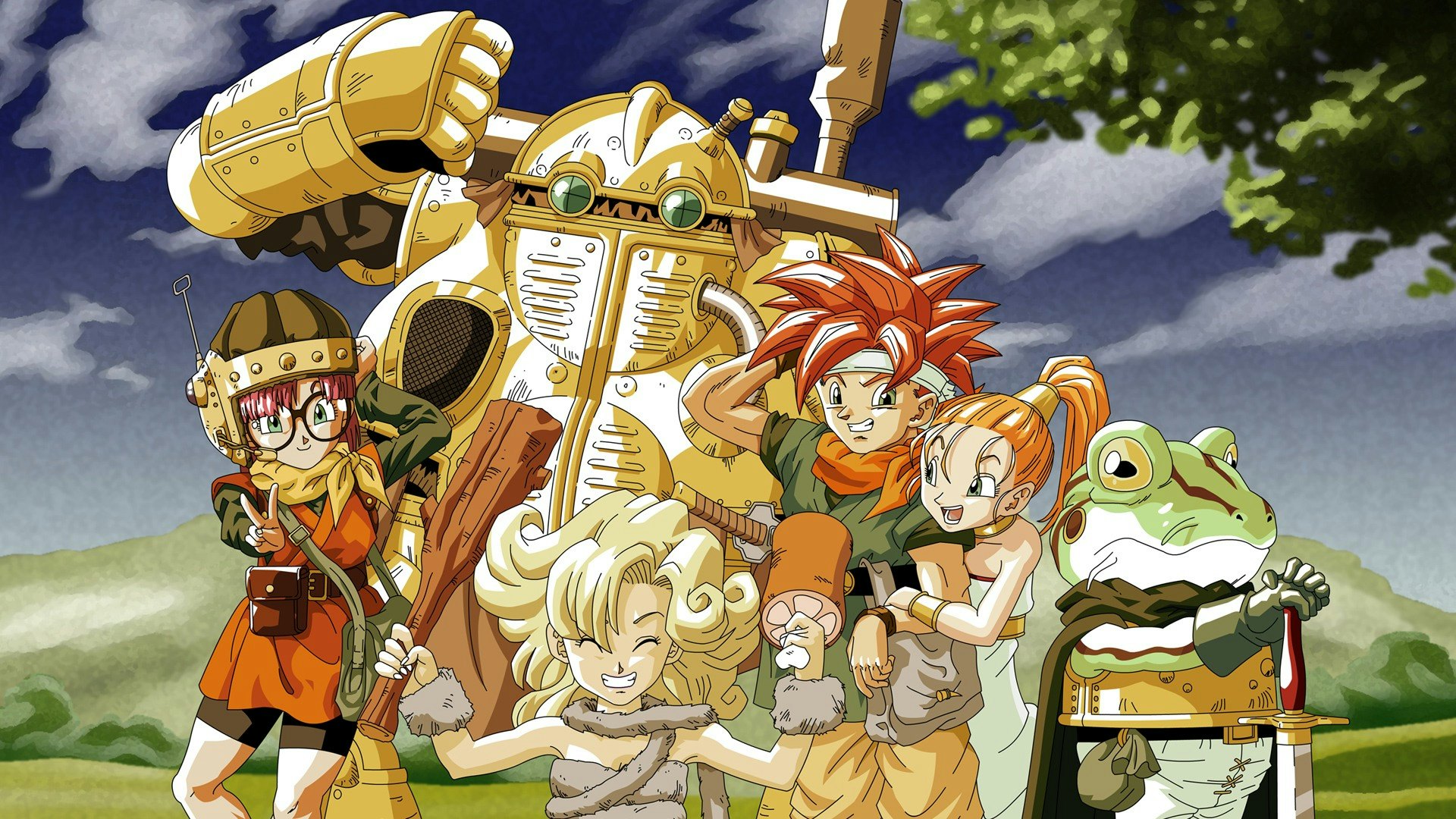
No game engages with the concept of time travel in a more satisfying and meaningful way than Chrono Trigger. And it’s one of few games that appropriately appreciate the appeal of a completely badass time machine. The Epoch, which you acquire during a jaunt to the ruined future of 2300 AD, is one of the coolest vehicles ever to grace a game console.
Time travel in Chrono Trigger is far more than a one-time gimmick or cutscene; it’s deeply woven into fundamental elements of the experience. Even while exploring the humdrum homes of NPCs, you’re encouraged to tinker around with the effects of your actions in the past on the future. (For instance, you could open those treasure chests in Porre Village circa 600 A.D at the earliest opportunity. But you’ll get a much bigger bang for your buck if you waggle your magic pendant in front of them and come back 400 years later.)
In addition to opening up more than a dozen different endings, Chrono Trigger uses its central gimmick to tell affecting stories about each of its playable characters. The adventure opens with Marle stumbling face-first into a kinda-sorta grandmother paradox situation, Lucca’s able to save her mother from a life-changing accident, and Robo’s able to transform a wasteland into a verdant forest — but only after spending a few centuries tilling the soil. Chrono Trigger’s story and world are very simple by modern standards, but the game’s depth and timelessness stem from the rich intricacy with which time travel is integrated into both.







